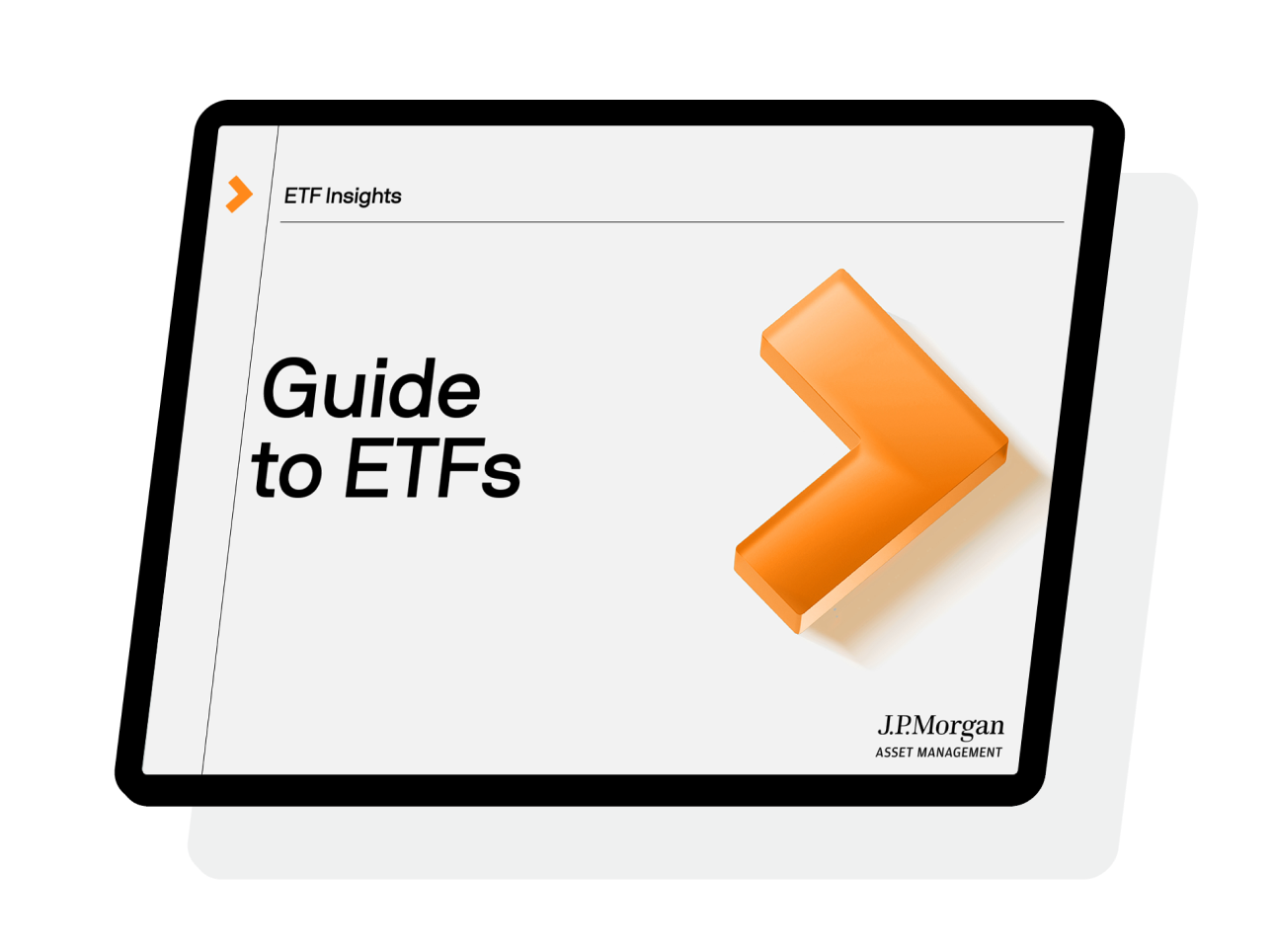Seeking current income, long term growth or a combination of both
* Source: Morningstar. JEPI Based on 2024 Global Actively Managed ETF AUM as of 09/30/25.
** Source: Morningstar. JEPQ Based on 2024 Global Actively Managed ETF AUM as of 09/30/25. Excluding mutual fund conversions.
JEPI + JEPQ: Why invest in both?
Consider investing in both JEPI and JEPQ to broaden your exposure to growth-oriented stocks.
Broaden your exposure to growth
- Combining JEPI and JEPQ can help investors participate more fully in the U.S. equity markets
- With JEPI’s sector allocations capped at 17.5%, investors will always have a structural underweight to the S&P 500’s sectors
- A mix of 60% JEPI and 40% JEPQ can provide investors with S&P-like sector exposure, more closely aligning their exposure to tech with that of the S&P 500 Index
Source: Standard & Poor’s, J.P. Morgan Asset Management; data as of 09/30/25. The 40/60 JEPQ/JEPI illustration represents a hypothetical portfolio that is not offered by J.P. Morgan Asset Management. Sector allocations are subject to change at the discretion of the Investment Manager without notice.
JEPI Performance
Prior to the implementation of a new management agreement on 11/1/19, performance for some periods may have reflected the waiver of all or a portion of the Funds advisory or administrative fees and/or reimbursement of other expenses by the adviser. Without these waivers or reimbursements, performance would have been lower.
Effective 12/9/19 the market price returns are calculated using the official closing price. Prior to 12/9/19 the market price returns were calculated using the midpoint between the highest bid and the lowest offering on the listing exchange as of the time that the Fund's NAV is calculated.
Currently, the yield is unaffected by a fee waiver.
JEPQ Performance
Prior to the implementation of a new management agreement on 11/1/19, performance for some periods may have reflected the waiver of all or a portion of the Funds advisory or administrative fees and/or reimbursement of other expenses by the adviser. Without these waivers or reimbursements, performance would have been lower.
Effective 12/9/19 the market price returns are calculated using the official closing price. Prior to 12/9/19 the market price returns were calculated using the midpoint between the highest bid and the lowest offering on the listing exchange as of the time that the Fund's NAV is calculated.
ETF Insights

Guide to ETFs
Your single source for timely, unbiased insights into the fast-growing world of exchange traded funds.
Benefits to you and your clients:
- Discover how ETFs provide cost effective and tax efficient access to actively managed strategies.
- Master ETF investing mechanics including trading best practices and tax management.
- Enhance your portfolio construction by providing strategic ETF insights.
Related funds
1 Blended approach is a hypothetical combination of 2 separate ETFs - 60% JEPI and 40% JEPQ - and is shown for illustrative purposes only, not available in blended vehicle.
RISK SUMMARY: The price of equity securities may fluctuate rapidly or unpredictably due to factors affecting individual companies, as well as changes in economic or political conditions. These price movements may result in loss of your investment. Investments in Equity-Linked Notes (ELNs) are subject to liquidity risk, which may make ELNs difficult to sell and value. Lack of liquidity may also cause the value of the ELN to decline. Since ELNs are in note form, they are subject to certain debt securities risks, such as credit or counterparty risk. Should the prices of the underlying instruments move in an unexpected manner, the Fund may not achieve the anticipated benefits of an investment in an ELN, and may realize losses, which could be significant and could include the Fund's entire principal investment.
